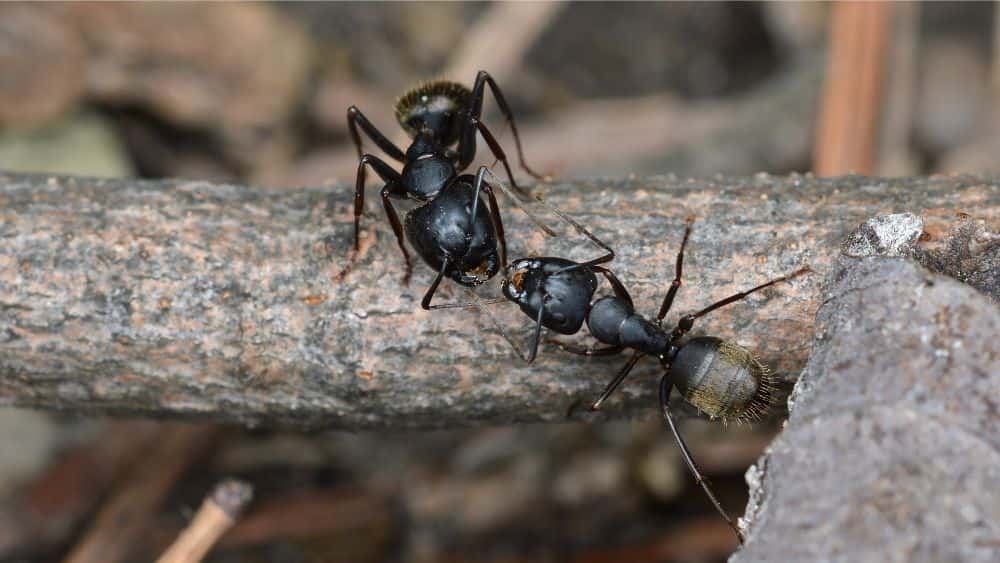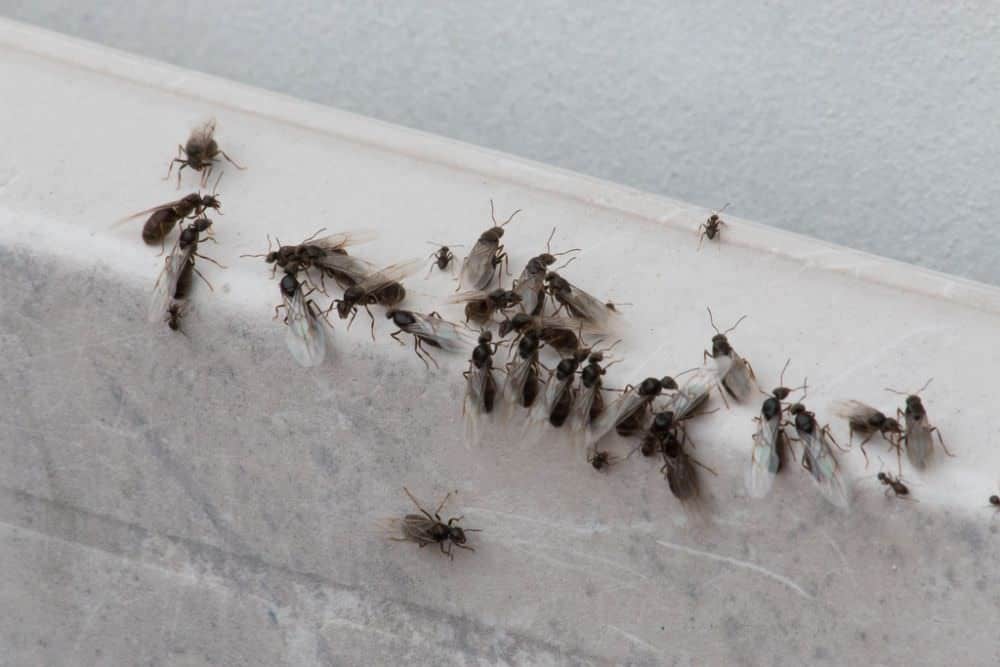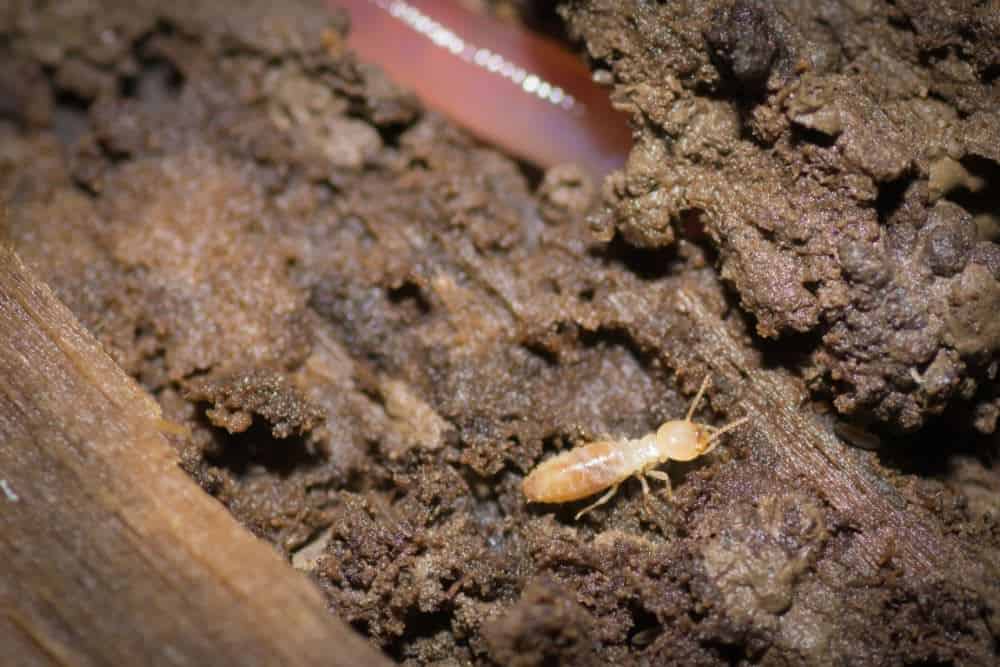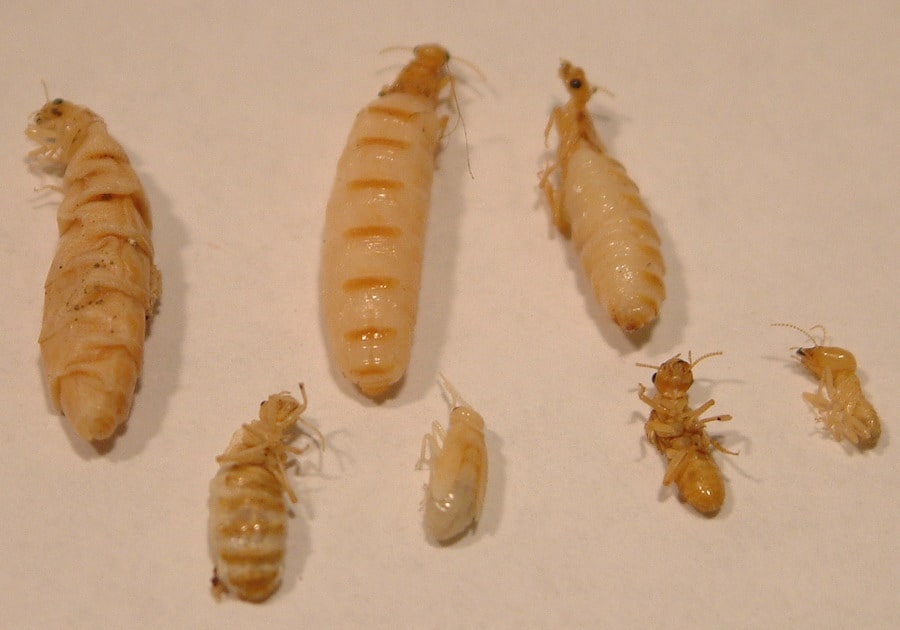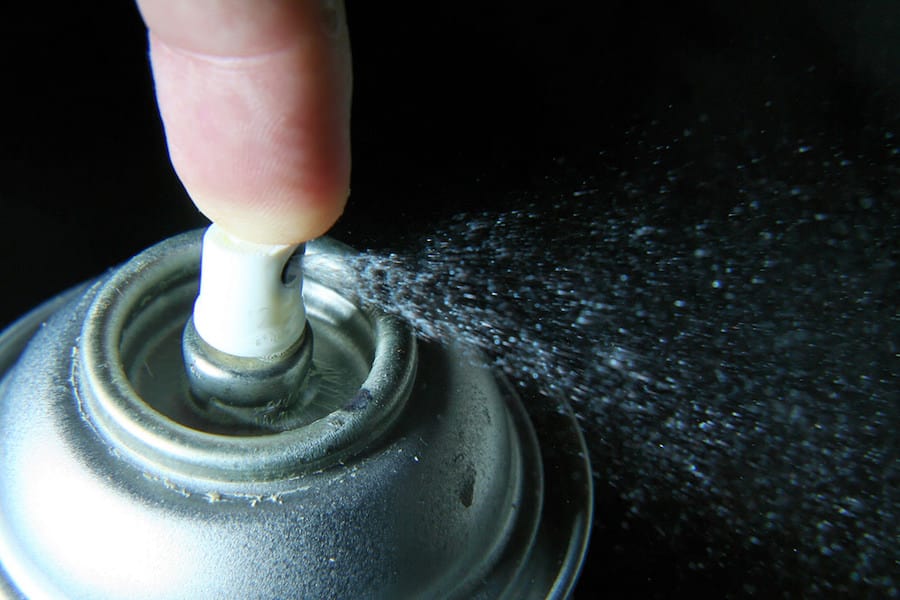Best Termite Killer Spray
No one likes them, but termites are something that need to be dealt with. Even if you run a meticulous house and yard, termites may still try to set up shop in your home. Arm yourself with information on effective termite sprays and treatments ahead of time. You’ll be ready for whatever pest population tries to make their home in yours.
If you’re looking for recommended termite sprays and killers, don’t look any further. I’ve done the grunt work for you of trying products and having them fail. Years dealing with termites in a professional capacity means I’ve seen it all. There’s no need for you to waste your time or money on approaches that just won’t get the job done.
How to Decide on the Best Termite Killer for Your Situation
Before selecting your termite killer, you’ll want to come up with a strategic plan for your termite eradication. Your plan of action will help dictate what termite killer best fits your current needs.
If it’s at all possible, you want to stop termites in their tracks. Start taking steps toward eradicating them from your property the moment you have an inkling they’re there. The longer you wait, the more serious an infestation you’ll have on your hands, meaning treatment costs will become much more expensive.
Hopefully, you’ll be able to nip the whole thing in the bud before there’s even a colony to speak of. Even if you have missed that window, though, there’s still hope. Contact a professional if you need help with organizing and planning a strategic approach to your termite problem.
Once you have your plan laid out, you’ll be ready to choose the product you want to use. There are a lot of factors that will go into determining the kind of termite spray you need. Take your time here organizing your requirements—that will help you make the best choice when it comes to selecting your preferred product.
The first thing to consider is the severity of your problem. If you’re dealing with an active infestation you will need a hard-hitting, multi-faceted approach to termite control. If, on the other hand, you are preventatively treating for termites—or know there are termites infestations in the area—your approach will have to be different.
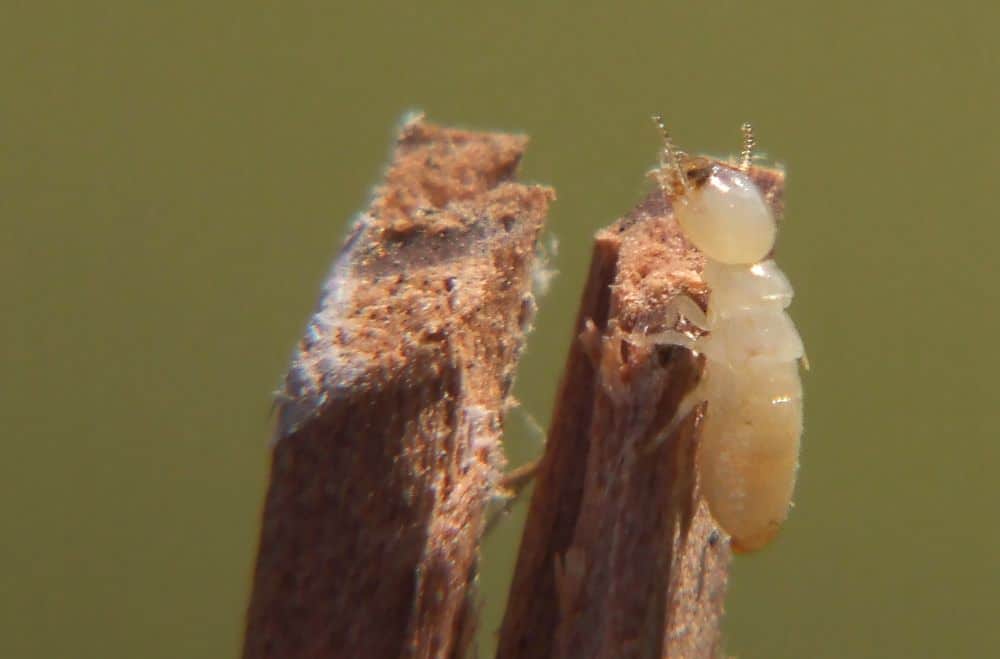
You will also need to factor in the size of the space you’re treating. If you’re treating a concentrated area—like a stump you know harbors termites—your product selection will be different than if you are treating termites in the house.
Some products will be for outdoor use only. It’s extremely important that you heed any warnings associated with the product you choose and follow the directions on the label exactly. If the product isn’t labeled for indoor use, there’s a reason why.
Some states have specific regulations about what can and can’t be used when it comes to insecticides. This is especially true if you live near protected lands or water sources. Always check with a professional if you have any doubts, and remember there’s a reason for those classifications as well.
You may also need to consider the type of chemicals you want to use. Children and pets may affect your product choice. If you have fish ponds, poultry, or other livestock animals, you may need to pay particular attention to restrictions. This is even more important if any of those animals are for future food use.
Maybe you want to take a more natural approach to pest control. You could be willing to use more significant chemicals to ensure treatment is effective. Whatever level of toxicity you have in mind, there are products out there that will work for you.
Best Termite Killers and Sprays
If you’re looking for tried and true termite sprays, here are some of my go-to products. Choose the one that best suits the needs of your specific pest problem—you won’t be disappointed with the results. Killing termites effectively can tough, especially in a larger infestation, but it is by no means impossible with the right approach.
FMC Talstar P Professional
Talstar Professional is a great option for dealing with your termite problem. It works against 75 different kinds of insects. While getting rid of (or just preventing) your termite problem, you’ll also be eradicating various other pests from your living space.
This product is safe to use both indoors and outdoors and is highly regarded in the industry. It’s a top choice for professionals. A single application will last several months. Quick to apply, long-lasting, and effective—it’s no secret why this is regularly used by pest control professionals.
You’ll want to avoid using it directly on food-prep surfaces, but it is safe to use where food is handled and prepared. This means your kitchen and outdoor eating and grilling areas can be treated for termites with Talstar Professional.
Talstar Professional is odorless and dries clear—you won’t need to worry about unsightly marks around your house’s perimeter. Once dry, it’s safe for pets and people, but you’ll want to limit exposure while it’s still wet.
This spray doesn’t leave residue and it doesn’t irritate skin. Even so, whenever working with Talstar Professional, you should make sure you are properly dressed for using chemicals. I always recommend long sleeves, pants, and appropriate gloves. Afterward, you should change out of the clothes your wore during application and wash them.
Most importantly, when using Talstar Professional—and any similar product—you should have something in place to protect your respiratory system. I use and recommend a respirator whenever possible, but a simple mask will help protect you as well.
This is a great broad-spectrum insecticide. If you’re wondering how it works, it impacts the nervous system of pests. First, it causes weakness, and eventually, leads to death. Especially if this is your first time using it, you’ll want to make sure you have a thorough application.
It’s always good to go in with a strong first treatment. If you omit places where the termites—or any pest—can take refuge, you’ll only displace the problem. Eradication should be your ultimate goal. It’s going to start with aggressive treatment right out of the gate.
It’s no secret that prevention is going to be the best course of action here. I recommend bi-annual application as a preventative approach. Talstar Professional is a concentrated formula, so you’ll need to prep the spray before use.
The formula is straightforward—for a heavy infestation, you use one fluid ounce of concentrate for every gallon of water. If you’re just using it as a preventative measure, you can get away with a more diluted mixture. For that, ⅓ of an ounce of concentrate for every gallon of water will be sufficient.
As with any chemical, you need to follow the manufacturer’s guidelines as closely as possible. They are in place to keep you and your family safe, and the product is designed to work while those parameters are in place.
Even if you’re heavy hitting termites, you should avoid applying on a windy day. You should also not retreat within a 7-day window.
For storage, it’s always important to keep chemicals out of reach of children and pets. Prevention is your best course of action in this regard as well.
I can’t help but recommend Talstar P Professional. It’s affordable, effective, and user-friendly. You’ll be on your way to living pest-free in no time at all.
Bifen I/T Insecticide-Bifenthrin
With a similar content to the FMC Talstar P Professional spray, this Bifen generic insecticide is great for treating infestations. It’s even safe for poultry and animal housing.
Like the Talstar product, this one works well against 75 different kinds of pests. It’s long-lasting and will have residual effects on pest population control for up to 5 years.
This spray is safe to use not only on the house but on your lawn and ornamental plants too. If you’re looking for an affordable and effective method of treating your pest problem, Bifen is more than suitable.
You’ll want to skip this product if you need to treat your interiors with a broad application. You also don’t want to use this on edible gardens—it isn’t safe for use on consumables, so if you have a vegetable or fruit garden impacted by pests, choose a different spray.
You also won’t have access to this product if you live in certain states. Arkansas, Connecticut, and New York have all restricted the sale of Bifen. In New York, it’s available for commercial application only.
This product has the same active ingredient as Talstar, and that means it works the same way to eradicate your pest problem. The chemicals interrupt the way pests’ nervous system works. It weakens them and eventually leads to their death.
The nature of the spray means this isn’t an instantaneous answer to your pest problem. You may continue to see termites for a short time until the spray has worked its way through the population. Even if you don’t see the immediate impact of the spray, you can rest assured it is continuing to work. You will be pest-free if you give it a little time.
Bifen continues to act as a deterrent for new pests after it has taken care of the current population. Like other chemical applications, the effectiveness of this product will hinge directly on a thorough application the first time it’s used.
Rain won’t impact the effectiveness of Bifen. It will dry clear when applied, and once dry it’s safe for both children and pets to be exposed to. The general rule of thumb is to allow at least 30 minutes between application and exposure.
Even though rain won’t diminish Bifen’s effects, it’s best to avoid application just before a rainstorm. I suggest allowing at least 24 hours between application and rain exposure, if possible. Plan your treatments accordingly.
A single application can last at full force for up to six months. In terms of a cost-efficient, time-efficient, and effective product, Bifen is clearly a top choice.
A .33 fluid ounce of Bifen concentrate to a gallon of water will give you a .02 percent solution that’s perfect for a low-level infestation, or for just preventing termites. If you need something stronger, you can apply up to a .06 percent solution with one fluid ounce of Bifen to one gallon of water.
It’s worth noting this single quart of Bifen concentrate will provide you with 32-96 gallons of usable spray. A single gallon of the mixture will cover 1,000 square feet when applied with a hand pump sprayer. You’ll be able to treat a significant amount of space multiple times with a single purchase.
Bifen is also safe to use pre- and post-construction against subterranean termites. The concentration for this application method is different than for the standard use spray.
For pre-construction application, you’ll use one gallon of the standard .06 percent solution for every 10 square feet. As a barrier around a perimeter, use four gallons of the .06 percent solution for every 10 linear feet.
Bayer Advanced Termite Killer
The Bayer Advanced Termite Killer is a concentrated formula, like both Bifen and Talstar. A different active ingredient, cyfluthrin, means the product works differently. Unlike the other concentrates that take time to cause the pests’ death, this formula kills on contact.
This product might kill more quickly, but it also needs to be applied at a greater frequency. You’ll still get a decent chunk of pest-free time—up to three months—from a single application. You just won’t get the three months the Bifen and Talstar provide, or the residual protection.
While the on-contact sprays certainly have their benefits, the biggest drawback to them is also their biggest strength—you must spray the pest directly. This doesn’t account for remote or hidden nests, and there’s no way for the pests to bring the poison back home to affect the others.
Bayer Advanced is a great product for use at home. It’s effective against multiple pests including termites, carpenter bees, ants, fleas, and ticks. You’ll love the immediate impact a treatment will have.
It’s safe to use on the exterior of your house and anywhere else, as long as you’re outside. It won’t hurt your lawn or gardens, and it can be used on wood piles. It’s not intended to be used inside, though. Avoid using this product in any space where you feel ventilation is compromised.
As with other pest control products, you should avoid applying this during rainy weather. It will need to sit a day or two before being exposed to bad weather to be as effective as possible. For maximum effectiveness, use it when there is minimal wind as well.
This product works well as a barrier. If you don’t have an active infestation, it will function as a preventative measure. As termites move to cross the treated area, they will be killed by the Bayer Advanced. This will prevent them from ever establishing a colony in your home.
For this product to really work as desired, though, you’ll need to have no gaps in your application. Thorough, consistent application is key for the success of any treatment plan, and that is certainly the case with Bayer Advanced.
For continued use as a termite-preventative measure, you’ll need to reapply at that three-month mark. This is especially true if you live in an area that’s warm all year round. In these areas, termites continue to be active and move into more frequent breeding cycles. Residing in such climates will leave you at greater risk for termites during a larger portion of the year.
Bayer Premise Foam/Termiticide
The Bayer Premise Foam/Termiticide is a different type of product from the others we’ve discussed here. The other three products I’ve reviewed are great broad-spectrum style sprays. They have active ingredients that work against multiple kinds of pests. These products are great for general and all-purpose pest control while still being effective against termites.
The Bayer Premise Foam is a termiticide, though. It’s formulated to work specifically against termites. Even better? It’s made to be used at the heart of the colony.
This foam termiticide comes in a portable canister. There’s no setup or mixing required—it’s simply ready to be used.
The thick, dry foam is great for applying to inner termite galleries. The foam expands and travels through the complex system of the colony at a 30:1 ration. You can also use it in other difficult-to-reach places like your floor joists and inside walls. If you suspect you have a termite problem just out of reach, this can be the solution you’re looking for.
I like this product for use in a targeted attack. Do you have the colony in your sights and have been looking for the treatment plan that will successfully infiltrate their space? This is just the type of product you want to have to make it happen.
Once the foam has been applied to the termites’ living area, it will stick to any termite that comes in contact with it. That termite will bring the foam into contact with other termites until the poison has spread through the entire colony.
This is not a product that works immediately to kill the termites. Instead, it is one that works slowly, moving through the colony at a controlled pace until it can do the utmost amount of damage.
There are some clear disadvantages to this product as well. Can you guarantee the termites are going to pass through the foam and carry it back to the other termites? The only time you really can is if you have access to the galleries they’ve created within an existing colony. If you can’t say you have access to them, this may not be the product you need for your pest problem.
How Do Termite Killers Work?
You’re probably all set to move forward with your plan to eradicate the termite problem you have. You might be wondering how the termite killers actually work.
There’s not a short answer to this question, because some of it will depend on the type of treatment plan you choose to use. I’ll discuss a few of the different types of treatments you might come across here.
Like some of the products mentioned here, you may be using sprays that kill on contact. These are chemicals and toxins that kill the insects they come in contact with. Sometimes these are pest-specific, and sometimes they are broad-spectrum. The pest may be killed in a variety of ways, depending on the product—from suffocation to system failure.
As in the case of sprays like Talstar, the active ingredient interferes with the pest’s nervous system. This doesn’t cause immediate death like the on-contact spray will. Instead, it weakens the pest’s nervous system and eventually leads to death. While a slower approach to pest control, such treatments generally last longer and are effective against more types of pests.
There is another kind of pest product that can be quite effective with termites. This is a bait system. When using a bait product, a poisoned bait is left out for colony members to bring back to the colony. When the bait is brought into the colony, more termites are exposed and the damage is widespread.
Each type of killer is an effective tool under certain circumstances. If you’re looking at a group of flying termites, you don’t need to set out the bait—just reach for the on-contact spray. However, it goes without saying that the on-contact spray isn’t going to do anything for the termites in the colony you can’t reach.
Knowing how each type of killer works can be an advantage. Using a combination of products and approaches, you’ll be able to cover your bases and rein in your pest problem. Choose the products you feel comfortable with, use them together, and you can be pest and worry-free in no time.
How to Use Termite Killers Effectively
Any of these termite treatments will be effective on their own. However, for the greatest impact, you’ll want to customize treatment to your specific needs.
I’ll start at the beginning. I’ve seen a lot of termites and a lot of pest infestations. My number one suggestion—in every situation—is to prevent the problem from happening in the first place.
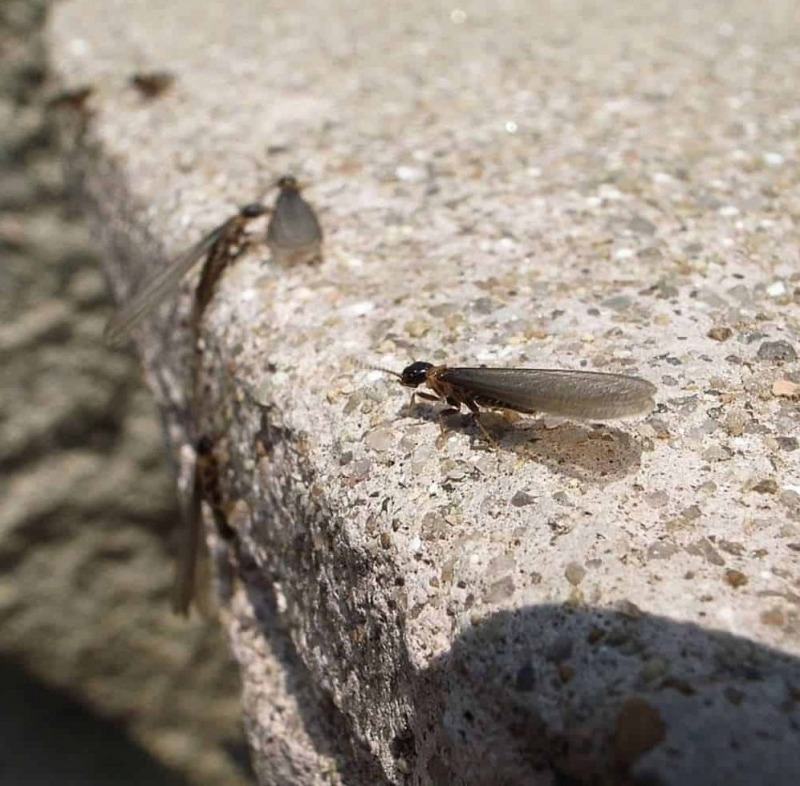
Preventative measures are the best measures to take. I recommend using a long-lasting spray that will keep pests at bay. If they don’t have the opportunity to truly get settled in your space, removing them will never be a problem.
Taking preventative action is straightforward. Choose a broad-spectrum insecticide and make it part of your seasonal maintenance. My advice is to do it twice a year and usually suggest spring and fall. A broad-spectrum insecticide means your preventative approach will keep away other pests as well, like ticks, flies, and mosquitoes.
Not everyone will be lucky enough to be approaching termites preventatively. If you have an active infestation, you will likely need more than a broad-spectrum diluted formula.
That’s not to say I don’t believe such a formula has value in this situation. I do. I am simply saying you will want more than just this product.
Using different kinds of products in conjunction with one another can be one of the best ways to eradicate a pest problem. Think of it as covering all of your bases. If you close all the windows but leave the door open—well, anyone can just walk right in.
The same is true with how you approach your pest problem. If you spray a group of flying termites with an on-contact spray and kill them, you’re down some termites. However, you also haven’t really addressed the issue—the other termites in that colony will continue to destroy your property. They will prepare to reproduce again, and next time you may not catch the alates in time.
My recommendation for an active infestation is to approach your termites from every angle possible. First, apply a more concentrated broad-spectrum insecticide formula to the exterior of your house and yard. These are long-lasting and may begin to weaken the termite colony. You will probably have some losses and no new colonies will try to move in.
If you do have swarming termites, do take an on-contact spray to them. They are responsible for expanding the colony and reproducing. Removing them from the equation will certainly be in your favor.
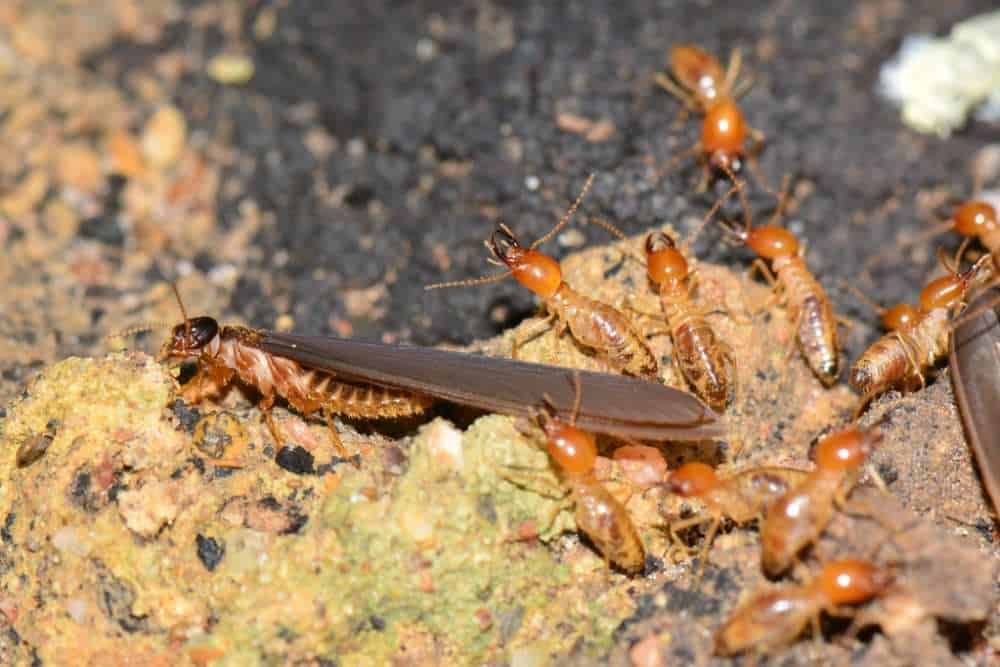
If you know the exact location of your termite colony (or colonies), hit these aggressively with treatments. You can go with a bait system or a product like Bayer Premise Foam. Either way, it’s crucial to prevent any termites in the colony from escaping your treatment approaches and simply relocating.
Here is something you may not want to hear about termites. Termites can live for years. A termite queen can live for actual decades and produce 165 million eggs during her lifetime. That’s not really something you want to take any chances on.
If, at any time, you feel like the scope of your infestation is too large for you to deal with, reach out to a professional. Remember, people working in pest control see infestations day in and day out. Chances are they’ve seen worse than what you’re facing. If you feel overwhelmed or like your tactics aren’t working, they should be able to provide a solution.
It’s worth noting here again that some states and areas have restrictions on what products are made residentially available. A professional working in a commercial capacity may have access to chemicals and products that you are denied access to as a homeowner.
These products generally come with greater risks and more regulations but may be what your individual pest problem needs. For more information on insecticides with limited availability in states like New York, look to this New York Times article.
Risks and Precautions
Dealing with pests can mean using serious chemicals. There are less toxic options, but, for the most part, they won’t work as well for you. This is another instance where you’ll want to balance the needs of your pest problem with your lifestyle. Look at what’s available and choose the product that most closely meets your needs—and your ideals.
You need to be aware that not all chemicals are approved for use in all states. You may also find there are specific provisions for properties near bodies of water.
Double check that the product of your choice is available where you live and safe to use in your specific ecosystem. If it isn’t, you will have access to something else that will work to combat your termite problem.
Standard chemical precautions should be applied to your pest control usage. Whether it’s considered safe or not for pets and children; I always err on the side of caution. A little extra time between application and exposure won’t hurt anyone.
Always wear appropriate clothing when you’re working with chemicals. Avoid flammable materials and work in long sleeves and long pants. You should wear chemical-proof gloves, work in well-ventilated areas, and properly protect your respiratory system. These are bug killers after all—there’s no need for you to be breathing that in.
When applying your termite sprays outdoors, pay attention to the weather. You want a window of at least 24 hours where there will be no rain. You also want a calm, windless day, where the spray will stay where you apply it and not travel to other areas. Again, this will be of special importance to you if you live close to water sources.
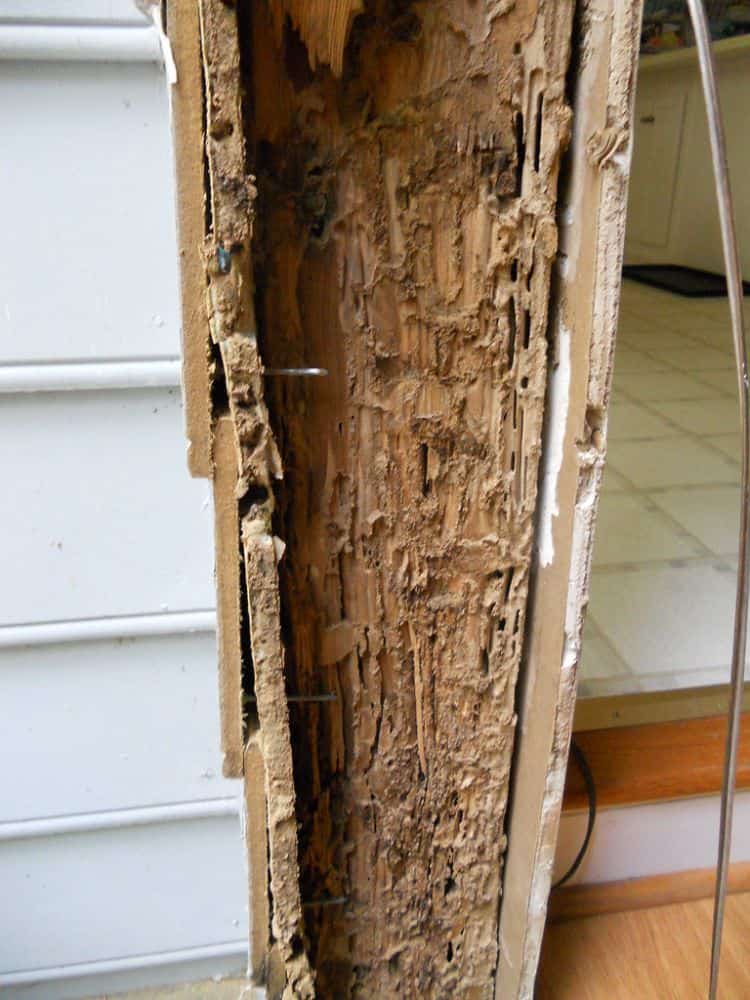
After using your product you should store it appropriately. Each manufacturer will have specific guidelines for storing their product. Follow those instructions exactly. You can expect they will call for storage in a cool, dry, storage facility, protected from the rain. You won’t want your product to get too hot or too cold.
If you have a concentrated formula, some mixtures are good only for a single use and won’t be able to be stored. Check this before you make your mixture. Make only what you intend to use, as some mixed compounds are not easy to dispose of.
Always make sure you store your chemical products out of reach of children and pets. If you follow the guidelines and store your products properly, they’ll be ready for your next use.
If you ever suspect you, your pet, or someone you love is having a toxic response to a chemical, don’t hesitate to seek medical assessment. This is another time I advocate for erring on the side of caution. For more information on what to look for in toxicity related to insecticide exposure, please read this article.
If in Doubt, Always Bring in a Professional
You may not be comfortable treating for pests yourself, or you may have a large-scale infestation that you don’t think you can handle on your own. Either way, It will be in your best interests to seek professional advice. While many sprays and killers can be applied at home by a single person, a multi-faceted pest approach can do wonders for infestations.
It never hurts to have a consultation with your pest control professional. Best case scenario, they’ll confirm that your approach is working. Worst case scenario, they’ll be ready to step in and finish the job.
When looking for a reputable professional to help you tackle your termite infestation, there are some things I recommend you take into account.
First, don’t expect to open up a phone book or do a quick internet search and select the first name you come to. Do your homework. You want someone who is well-respected in their field and has a good track record. You are investing time and resources into this pest control professional. Don’t make a mistake that could be easily avoided.
Second, pay attention to how long the company or person has been in business. Is this a new venture? What kind of experience do they have? If someone is just as inexperienced as you are, using widely available products—they probably aren’t the pest professional you need.
Third, ask if the company has certified or licensed technicians. Don’t be afraid to ask them about their qualifications. True professionals won’t shy away from those types of questions or concerns. You may also want to ask about the products they use—how they answer can be quite telling.
Finally, stay away from companies that offer package deals or pressure you into signing contracts immediately. A company worth investing your time and money into won’t look to earn your business with flashy deals or intimidation.
More information on how to choose the right pest control company can be found here from the EPA.
Termites—If You Have Them, Get Rid of Them
Pest control is an unfortunate aspect of home ownership. Most of us have faced an infestation of some kind. Termites can be stressful and unappealing to deal with. You’ll be treating the immediate problem, but also the possible repair of inhabited structures. The reality of termites—and all they bring with them—can weigh heavily on you.
There’s no need to let the termites defeat you, though. You have plenty of options out there for termite sprays and killers. Don’t delay starting your treatment. Once you’ve selected the right termite spray for you, your termite problem will be well on its way to being solved. If you have more unanswered questions or need more information than what’s been provided here, you may find what you’re looking for in other articles on our site.

